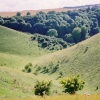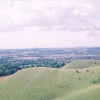Please login or click here to join.
Forgot Password? Click Here to reset pasword
 |  |  |  |  |  |
| Edward Lever Posts: 734 Joined: 22nd Dec 2005 Location: UK | quotePosted at 21:11 on 21st March 2013 Most digital cameras have a built-in anti-aliasing (AA) filter over the image sensor. The purpose of the AA filter is to limit the detail presented to the sensor so that sampling artefacts such as Moire patterns do not show up on the digital image. There seems to be an increasing interest in cameras made specially without an AA filter over the sensor (such as the Nikon D800E) which claim increased sharpness over a similar sensor fitted with an AA filter. The images produced may appear sharper, but the image detail is not necessarily representative of reality, since the sharper edges are in fact sampling artefacts. Sampling theory applies equally well to music recordings. Taking the AA filter off an audio recording system would introduce non-musical aliases which would sound most unpleasant. However, the ear (in the frequency domain) and the eye (in the spatial domain) respond to alias components in different ways. Audio aliases are unmusical but spatial aliases which give an apparent increase in image sharpness may be seen as advantageous by some people. I can see that architectural and landscape photographers might like the effect. Personally, I prefer my images to be as representative as possible of the image captured by the lens. Therefore I don't think I would want a camera which does not have an AA filter. Anyone else have a view ? |
| Dave John Posts: 22335 Joined: 27th Feb 2011 Location: England | quotePosted at 21:22 on 21st March 2013 Not something that I have ever really considered Edward so in order to contribute to this i would need to have a play with a couple of camers and compare the images. On a very similar vein though I would like a Infra red converted but it is not the cheapest job in the world somewhere in the region of £250-300 and that is just the conversion you still have to provide the camera!!!!! |
| Edward Lever Posts: 734 Joined: 22nd Dec 2005 Location: UK | quotePosted at 21:33 on 21st March 2013 I agree it would be nice to try these experiments, Dave, but I don't think my manual dexterity would be good enough to take things apart around the sensor. Having said that, the price of second-hand DSLRs has come down so much it might be tempting to play. My post was really just testing to see if people thought the removal of the AA filter was just a fad or had any real benefit. It might just be an excuse to charge more for a camera which has something omitted ! |
| Dave John Posts: 22335 Joined: 27th Feb 2011 Location: England | quotePosted at 21:39 on 21st March 2013 I think you may well be right there sir. And I highly the average Joe Public would be able to tell the difference anyway. |
| Vince Hawthorn Posts: 12758 Joined: 19th Apr 2010 Location: UK | quotePosted at 21:43 on 21st March 2013 I think this question is really one for the more techno among us, I have seen but not studied the side by side test of the D800E & D800. |
Mark Stace Posts: 17 Joined: 4th Apr 2012 Location: England | quotePosted at 22:57 on 21st March 2013 Well funny you should mention this subject as I have been eyeing up the Nikon D7100. It is the first crop sensor DSLR to be made specifically without the low pass (anti-aliasing) filter.From what I have seen and read it would appear that you need a lot of mega pixels to be able to do without one and not suffer moiré problems. I have looked on Flickr to compare shots and to be honest I don’t see much difference between with and without. That said I have also read that you would have to make a huge enlargement before the without AA filtered camera would then give a sharper image.In short unless you intend poster or bigger prints there is no visible difference.Some people don’t think much of Ken Rockwell’s thoughts but his blog is still worth a read now and again.I am such a mug I will probably buy the Nikon D7100 anyway.
|
| Paul Hilton Posts: 2605 Joined: 21st Nov 2004 Location: UK | quotePosted at 14:17 on 22nd March 2013 And to add to make a noticeable difference between these two cameras, for the D800E, you'll want to add a sturdy tripod; use only Nikon's top line lenses, and stay in the mid-range of apertures around F5.6 to F8. Edited by: Paul Hilton at:22nd March 2013 14:18 |
| Please login to post to this thread... |